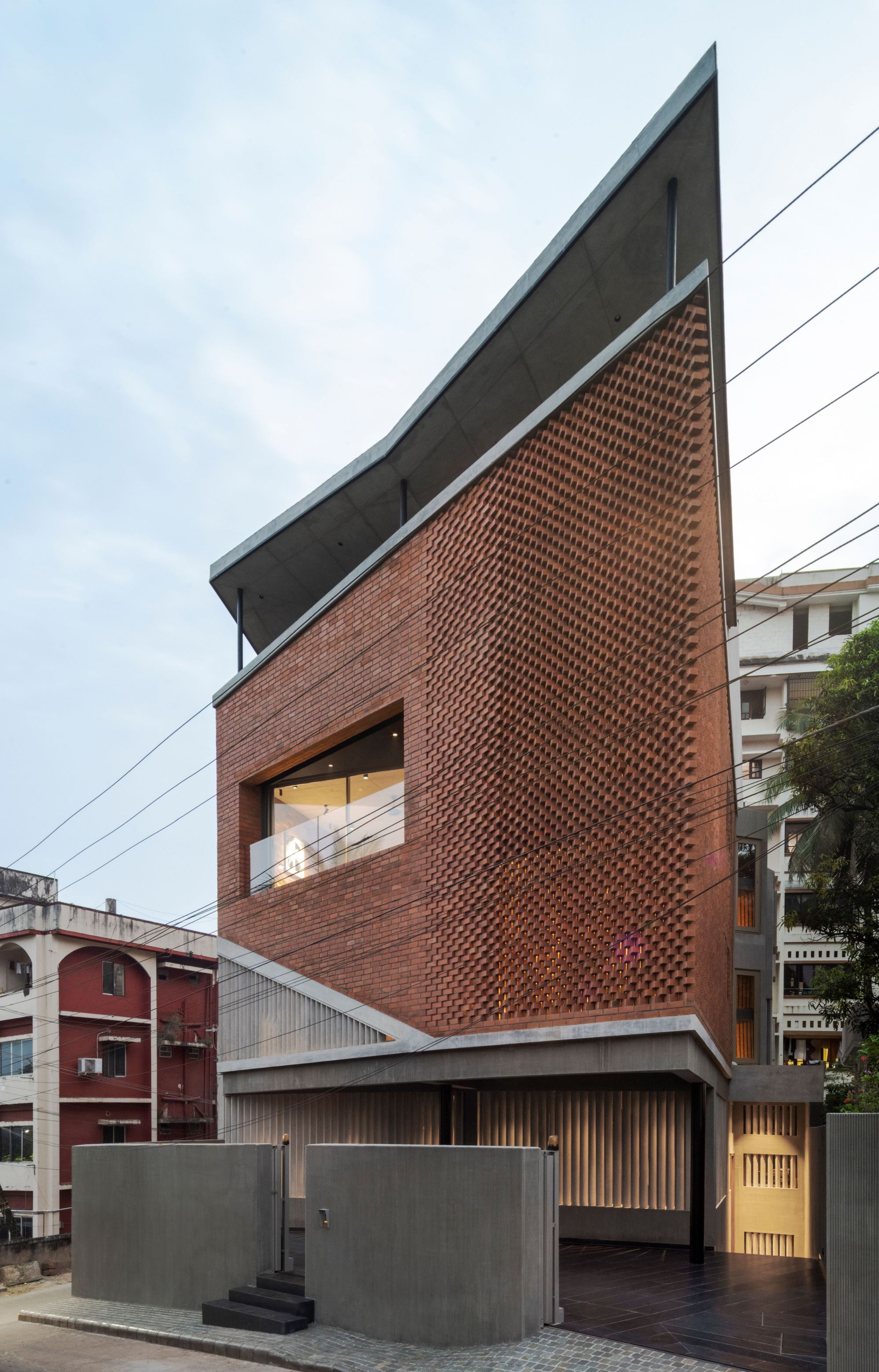Architect In Pondicherry Designs A Minimal House That Is Strikingly Introverted
Planned in a densely built locality with no impressive vistas for the house to face, the Brick House creates its own focal points and looks inward instead.

“When you walk into a house that is extremely introverted with nothing to see outside, you rely on the internal courts where the light percolates down and that becomes a spectacle.”— Akshay Heranjal
Designed for a client who lives in Saudi Arabia, this house is what architect Akshay Heranjal describes as one of the team’s ambitious collaborations. The house was a way for the client to stay in touch with his roots that lie in Mangaluru, a small coastal town in Karnataka — it was a home that the client wished to have to come back to and which would be an abode not just to him but his memories as well.
FACT FILE
INSIDE THOUGHTS
The plot that the Brick House in Mangaluru is located on, is surrounded by a lot of things. There is a villa, apartment buildings and smaller homes all around. To deal with the monotony of the densely built masses surrounding the plot and nothing picturesque to look outside, the house chooses to look inwards instead.
INSIDE THE HOUSE
With a house that is so introverted, the interiors pull up to imbibe it with a strong personality. The Brick House has two paths into the house. One leads to the main entrance that opens into the living area and the rest of the house, and the other takes you to the Majlis area on the lower ground level.
The ground floor holds the living area, the dining area, a bedroom with an attached dresser and bath, and two interconnected kitchens with utility.
The sculptural-looking central stairwell is what holds the house together. It opens up differently at each level and varies in consistency in terms of the light. The skylights illuminate the walls in patterns that feel as if they are mirroring the treads of the staircase itself, adding another layer of detail to the entire element.
Additionally, interspersed across the plans are a series of voids. These voids allow the spaces to be connected vertically. With some courts being through and through, while some being limited to create selected double-height spaces — these elements create pockets of intrigue that are open to the sky around which the remaining spaces of the house are positioned, as opposed to the dull outside. The heights of these courts have been backed by thought given to the usage of the spaces they are opening up. For example, the court above the dining only has a double height to prevent the noise of babbling guests from going all the way up into the private quarters.
PRIVATE VS PUBLIC
The house artfully segregates the public areas of the house from the private areas. For large groups of guests, the lower ground level, next to the parking, is the lounge area, also called Majlis, which has direct access from the outside.
Similarly, on the upper level, the private areas of the two bedrooms are discrete from the posterior common area and the prayer area. Between the public and the private spaces are the voids that maintain a visual connection with the spaces below.
The public-private segregation is also demonstrated by the fins that line the living area, from where the owners can look outside, but difficult to discern the interiors when outside.
MATERIALS
The way the material palette unravels is a journey in itself. From afar, the building boasts a bold brick facade, however, when the doors slide open, the Brick House welcomes you with brutal concrete finished in soft details. The slits on the facade reduce down into ribs on the plinth and flat out into a plane concrete finish on the ceiling which continues inside. The monotony of the pale grey of the concrete is balanced by the black steel columns. This narrative of materials shifts as soon as one steps inside, where the bricks finally make their appearance.
A striking design choice made during the process was not to have any fabrics mar the finish of the house. This proved to be a challenge to overcome when thinking about how to avoid the billowing fabric that is common to shade the windows. The solution to this lay in the rattan, which was sandwiched between two panes and then installed as the windows.
In the interiors, for example in the master bedroom, the patterns established early on at the entrance continue making an appearance. The ragged groves in the concrete walls are mirrored by the grooves on the wooden doors. Any need for softness is lent by the teak wood and the rattan that add breaks in the concrete and helps in the reflection of light where necessary.
Finally, the pinnacle detail of the house — the bricks — is what allows light to filter in through the gaps incorporated in the brick bonds. The variance and the inconsistency make the quality of light almost mesmerising to watch throughout the day — another detail that ties into making the whole inverted nature of this house adventurous, curious and non-monotonous.
The unravelling of the Brick House is a visual journey rather than a verbal one. Don’t miss watching the complete video where Heranjal candidly narrates the design philosophy. Download the eBook for the complete collection of stunning pictures that capture every essence of this residence. Browse through other modern homes in India on the website by clicking here.
